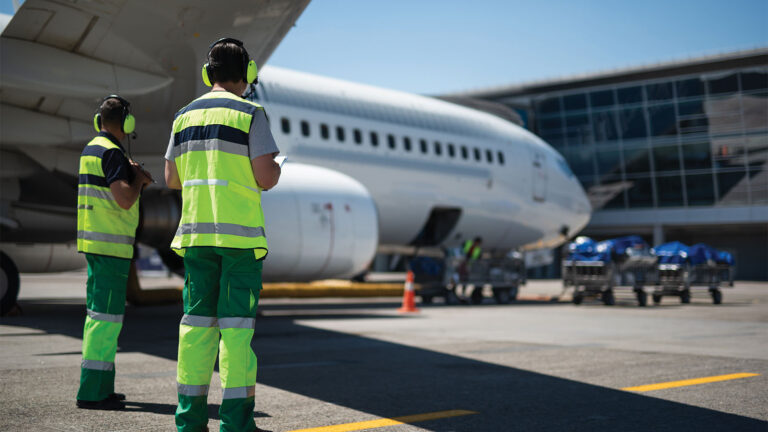Stay Up to Date
Submit your email address to receive the latest industry and Aerospace America news.
Nominations for AIAA Board of Trustees
Members-at-Large and for Board of Trustees Treasurer are Being Accepted Through 14 August
The AIAA Executive Nominating Committee (ENC) will compile lists of potential nominees for the Board of Trustees – Members-at-Large and for the Board of Trustees Treasurer. These lists will include nominees who will be selected to go to the next step of competency review and interview held by the nominating committee. The ENC will select specific candidates for the Institute’s Board of Trustees – Members-at-Large and for Board of Trustees Treasurer in September 2020. The Board of Trustees – Members-at-Large will be voted on by the Council of Directors and the Board of Trustees Treasurer will be voted on by the Board of Trustees. Elections will be held in March 2021 and announced soon thereafter.
The skills and competencies being sought for this election of Board of Trustees – Members-at-Large and the Board of Trustees Treasurer are:
Vision: Persons who have the ability to understand present states, clearly define what they should be in the future, and identify steps to achieve those ends.
Diverse Business Acumen: Persons who have the knowledge and understanding of the financial, accounting, marketing, communications, human resources, policy, and operational functions of an organization as well as the ability to make good judgments and quick decisions.
Domestic and International Aerospace Knowledge and Experience: Board membership reflects: a) the breadth of the various major sectors of aerospace both domestic and international; b) all levels of technology and systems development from basic research through all technology readiness levels to product development and deployment; and c) from different disciplines within aerospace.
Leadership/Strategy/Execution: Persons who have the ability to create a shared vision, obtain participation and buy-in, and achieve successful results.
AIAA Leadership and Participation: Board membership reflects experience in successful participation in a wide variety of leadership positions within AIAA, as well as knowledge of the new governance model.
Experience in adjacent aerospace areas: As the Institute broadens its reach beyond the traditional “Breguet Equation” disciplines, Board members who have experience in and strategic perspectives in these adjacent areas will broaden the Board’s view on new and emerging areas.
Contacts with new or developing leaders: As the Board evolves it is important that its membership be viewed as experiencing change as well. Board members who have knowledge of emerging leaders will be able to effectively assist in that endeavor.
Experience with organizational growth: Persons with experience in significantly growing organizations will serve as a resource to the Board as the Institute seeks to grow.
Experience with change or transition management: Board members with prior experience in organizational change or transition will serve as a vital resource to the Board as it seeks to execute its role.
Demographic diversity: In addition to reflecting the membership’s diversity in the industry and volunteer involvement, it is important that the new Board membership be seen as reflecting demographic diversity (e.g., gender, ethnicity, age, etc.) as well.
AIAA members may nominate qualified individuals for the AIAA Board of Trustees – Members-at-Large or for the Board of Trustees Treasurer by submitting the following (in 3 pages max):
• Nominee’s Bio and/or CV and history of AIAA activities and/or engagement with other professional societies
• Statement from the nominee of willingness and ability to serve if elected
• Statement from the nominee addressing how he/she meets the sought competencies
Please submit nominations directly to Christopher Horton, AIAA Governance Secretary, [email protected], no later than 1800 hrs EDT, 14 August 2020.
2020 Regional Student Conferences
AIAA is pleased to announce the 2020 Regional Student Conference winners. AIAA sponsors student conferences in each AIAA region for student members at both the undergraduate and graduate levels. In typical years, students present their research in-person and are judged on technical content and clarity of communication by professional members from industry. This year students were judged solely on the merits of their papers because the in-person conferences were cancelled due to the coronavirus pandemic.
The first-place winners in each category (listed below) are invited to attend and present their papers at the AIAA International Student Conference held in conjunction with the 2021 AIAA SciTech Forum in Nashville, Tennessee, 11–15 January.
Region I
Undergraduate Category:
• 1st Place – “Multi-vehicle Control and Autonomy for Swarming Quadrotors.” Charles Flanagan and Norman Wereley, University of Maryland – College Park (College Park, MD).
• 2nd Place – “Computational Model of the Mean Flow and Turbulence in a Heated Supersonic Jet.” William Perez and Mayuresh Patil, Virginia Polytechnic Institute and State University (Blacksburg, VA).
• 3rd Place – “Venus Atmosphere and Regolith Earth Delivery System.” Nicholas Dietrich and Laura Garcia Insa, University at Buffalo – The State University of New York (Buffalo, NY).
Masters Category:
• 1st Place – “3-D Large Eddy Simulation of Dynamic Stall on a Dynamically Pitching Airfoil.” Harry Werner, Clarkson University (Potsdam, NY).
• 2nd Place – “Acoustic Characterization of a Dual Stream Rectangular Supersonic Jet with Three-Sided Fluid Shield.” Nick Scupski, Pennsylvania State University (State College, PA).
Team Category:
• 1st Place – “Sharp-edge Handheld Identifier and Remover in Low-gravity Extravehicular Environments.” Natasha Dada, Kalpana Ganeshan, Matthew Groll, Sophia Kolak, Swati Ravi, Adrien Stein, and Di Wang, Columbia University (New York, NY).
• 2nd Place – “Experimental and Theoretical Analysis of Fin Design Impact on Rocket Performance.” Yogesh Baloda, Atharv Datye, and Sohail Zaidi, San Jose State University (San Jose, CA).
Region II
Undergraduate Category:
• 1st Place – “Discrete Vortex Method for Modeling Effects of External Flow Disturbances on Airfoils.” Andrew Mistele and Arunvishnu Sureshbabu, North Carolina State University (Raleigh, NC).
• 2nd Place – “Simulation and Optimization of Aerogel Packaging Solutions for Cold-Chain Biologistics.” Elijah Gasmen, University of Memphis (Memphis, TN).
• 3rd Place – “Store separation trajectory clusters using machine learning.” William Gothard and Kenneth Granlund, North Carolina State University (Raleigh, NC).
Masters Category:
• 1st Place – “Utilizing Topology Data to Facilitate Geometric Control of a Spacecraft During Lunar Landing.” Brennan McCann and Morad Nazari, Embry-Riddle Aeronautical University (Daytona Beach, FL).
• 2nd Place – “Active Subspace Investigation of Commercial Supersonic Design Space.” Nathan Crane and Dimitri Mavris, Georgia Institute of Technology (Atlanta, GA).
• 3rd Place – “ANSYS shape optimization for the UTC Flying Mocs Design/Build/Fly Nose Cone.” Aaron Crawford and Canon Debardelaben. University of Tennessee – Chattanooga (Chattanooga, TN).
Team Category:
• 1st Place – “Guidance, Navigation, and Control Subsystem Trade Study of AEGIS.” Ruthie Hill, Will Sherman, Darcey D’Amato, Maxwell Cobar, and Carlos Montalvo, University of South Alabama (Mobile, AL).
• 2nd Place – “Development of an Excavation and Transportation System for Sub-Lunar ISRU Applications.” Archit Srivastava and Lobna Mahmoud, Florida Institute of Technology (Melbourne, FL).
• 3rd Place – “Development and Test of a 3500 N Liquid Rocket Engine and Feed System for Future Sounding Rocket Applications.” Patrick Palmetshofer, Adele Payman, Benjamin Zabback, Amalique Acuna, Kyle Lundberg, Mackinnon Poulson, Aliya Mahmud, Jacob Zhong, and Emily Ku, Georgia Institute of Technology (Atlanta, GA).
Freshman/Sophomore Open Topic Category*:
• 1st Place – “The Obstruction of Lunar Exploration: Properties and Mitigation of Lunar Dust.” Esha Shah, University of Florida (Gainesville, FL).
• 2nd Place – “A Survey of the Moon’s Gravitational Field and its Effects on Lunar Satellites.” Madeline Stophel and Benjamin Jones, University of Florida (Gainesville, FL).
• 3rd Place – “Sustained Space Missions—The Microbiome and Health of Passengers Aboard Spacecraft.” Tegla Jones and Mackenzie Wiles, Florida Institute of Technology (Melbourne, FL).
*Additional category sponsored by Region II only.
Region III
Undergraduate Category:
• 1st Place – “Genetic Optimization Algorithms for Supersonic Heat Addition.” Louis Villa, Purdue University (West Lafayette, IN).
• 2nd Place – “Evolution of Particle Deposition in an Impinging Coolant Jet.” Noah Gula and Jeffrey P. Bons, Ohio State University (Columbus, OH).
• 3rd Place – “Experimental Setup for Particle-laden Underexpanded Jet Measurements.” Ari Jain, University of Illinois at Urbana-Champaign (Champaign, IL).
Masters Category:
• 1st Place – “Effects of Fountain Flow Interaction on Dual Jet Impingement at Mixed Operating Conditions.” Spencer Stahl and Datta Gaitonde, Ohio State University (Columbus, OH).
• 2nd Place – “Measurement of Integrated Unsteady Transonic Aerodynamic Forces.” David Pitts and Matthew McCrink, Ohio State University (Columbus, OH).
• 3rd Place – “Atmospheric Breathing Ramjet for Martian Descent Missions.” Aaron Afriat and Sandeep Baskar, Purdue University (West Lafayette, IN).
Team Category:
• 1st Place – “Design and Development of a Mining Robot for the NASA Lunabotics Competition.” Alexander Reid, Justin McElderry, Kyle Holland, Austin Fritsch, and Noah Kennedy, Milwaukee School of Engineering (Milwaukee, WI).
• 2nd Place – “Modeling the Mechanical Characteristics of a Piston Pressurant System for Spacecraft Bipropellant Tanks.” Jordan Lombardo, Noah Gula, Shreyas Doejode, Tyler Schell, and John Horack, Ohio State University (Columbus, OH).
Region IV
Undergraduate Category:
• 1st Place – “Insect In-Flight Kinematic Adjustments During Ethanol Exposure.” Ethan Lane and Imraan Faruque, Oklahoma State University (Stillwater, OK).
• 2nd Place – “Experimental Verification of Turboelectric Power System Model for UAS.” Cole Replogle and Malorie Travis, Oklahoma State University (Stillwater, OK).
• 3rd Place – “Development of an N-Camera Data Association Algorithm.” Timothy Runnels and Imraan Faruque, Oklahoma State University (Stillwater, OK).
Masters Category:
• 1st Place – “Electrode Erosion of An Electrical Discharge Machining Drill Used for Aerospace Fastener Removal.” Connor McCain, Oklahoma State University (Stillwater, OK).
• 2nd Place – “Evaluation of SolidWorks Flow Solver in Preliminary Supersonic Aerodynamic Design.” Kylar Moody, Oklahoma State University (Stillwater, OK).
• 3rd Place – “The Impact of the Boeing 737-Max Crashes on the Design and Certification Process of the Aerospace Industries.” Muwanika Jdiobe and Kyle Hickman, Oklahoma State University (Stillwater, OK).
Team Category:
• 1st Place – “Conceptual Design of a Propulsion System for an Air-Launch-to-Orbit Aircraft.” Samuel Cross, Abdalrahman Mansy, Matthew McCool, Dilan Randall, Timothy Runnels, Garrett Wilkins, and Kurt P. Rouser, Oklahoma State University (Stillwater, OK).
• 2nd Place – “Cycle Design for a Proposed B-52 Bomber Turbofan Tutorial.” Austin Clark, Skylar Jacob, Abdalrahman Mansy, Matthew McCool, Cameron Newport, and Cole Replogle, Oklahoma State University (Stillwater, OK).
• 3rd Place – “Real Turbofan Gas Engine Parametric Cycle Analysis Computer Program.” Jonathan Artalejo, Gustavo Ravello, Samuel Riecke, and Garrett Townsend, Oklahoma State University (Stillwater, OK).
Region V
Undergraduate Category:
• 1st Place – “Hypersonic Crossflow Investigation on the HIFiRE-5 Elliptic Cone.” Eric Hembling and John Wirth, U.S. Air Force Academy (Air Force Academy, CO).
• 2nd Place – “Methane Dependence on Temperature.” Mohamed Ferchiou and Mitchell Hageman, U.S. Air Force Academy (Air Force Academy, CO).
• 3rd Place – “Development and Application of a Dynamic Stability Evaluation Technique for the NASA Orion Program.” Samuel Spangler and Nathaniel Lavery, U.S. Air Force Academy (Air Force Academy, CO).
Masters Category:
• 1st Place – “Digital Data Processing Method for Shock Tube.” Frank Kalany and K.M. Isaac, Missouri University of Science and Technology (Rolla, MO).
Team Category:
• 1st Place – “Development of a Computational Propeller Model.” Henry Moore, Dakota Labine, Maxwell Alger-Meyer, Libby Hasse, Rebecca Rivera, Michael Flores, Nathaniel Hetzel, Nathan Castile, Shawna McGuire, and Mitchell Spencer, University of Colorado Boulder (Boulder, CO).
• 2nd Place – “Engine Preliminary Design for a Stealthy Supercruising Tactical Tanker.” Ahsan Tariq, Mohamed Ferchiou, Jacob Funk, William Walk, Ryan McDermott, and Aaron Byerley, U.S. Air Force Academy (Air Force Academy, CO).
• 3rd Place – “Nano Stratospheric Aerosol Method (NanoSAM).” Aanshi Panchal, Sarah Reitz, Michael LaBarge, Conner McLeod, Joshua Horst, Jared Cantilina, Jacob Romero, Zoltan Sternovsky, Hui Min Tang, and Jessica Harrs, University of Colorado Boulder (Boulder, CO).
Region VI
Undergraduate Category:
• 1st Place – “Bréguet Range Equation in Constraint Analysis Form for Power-Rated Aircraft.” Jeffrey Chen, Embry-Riddle Aeronautical University (Prescott, AZ).
• 2nd Place – “Design and Manufacturing of a Low-cost, Carbon-fiber Composite University-Class Amateur Rocket.” Emilio Gizzi and Jessica Vinh, Portland State University (Portland, OR).
• 3rd Place – “Ram Accelerator Operations at the University of Washington and Starting Effects of an Obturator in a Ram Accelerator.” Kristina Dong and Adrian Lo, University of Washington (Seattle, WA).
Team Category:
• 1st Place – “MataMorph 2: A New Experimental UAV with Twist-morphing Wings and Camber-morphing Tail Stabilizers.” Adam Schlup, Tommy Maclennan, Cristobal Barajas, Bianca Talebian, Gregory Thatcher, Richard Flores, Justin Perez-Norwood, Christian Torres, Kebron Kibret, Edgar Guzman, and Peter Bishay, California State University – Northridge (Northridge, CA).
• 2nd Place – “Data-driven Modeling and Prediction of Mechanical Behavior of Origami-based Mechanical Metamaterials.” Jiacheng Chen, Po Wen Hsiao, Elaine Xiong, Silas Shon Hymn Shu, and Yasuhiro Miyazawa, University of Washington (Seattle, WA).
• 3rd Place – “Design and Construction of a Low-Voltage Bradbury-Nielsen Gate.” Kevin Sampson, Brandon Dillon, David Torre, and Lorenzo Laxamana, University of Southern California (Los Angeles, CA).
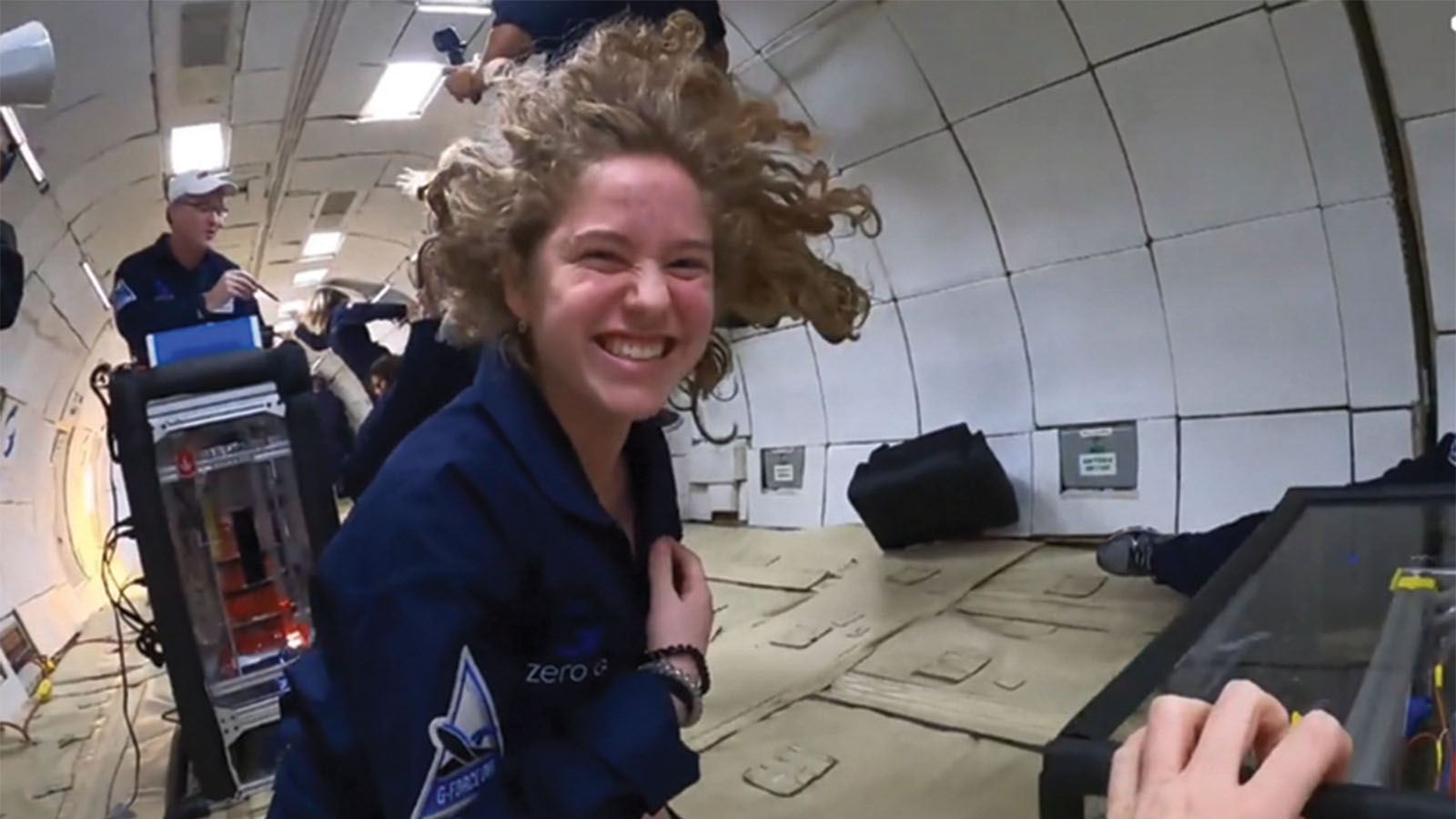
Making an Impact: Design/Build/Launch
AIAA is proud to partner with Blue Origin for the Design/Build/Launch Competition as we strive to inspire the future workforce in STEM fields. Eleanor Sigrest—who is enrolled in a dual program at Forest Park High School in Woodbridge, VA, and the Governor’s School at Innovation Park in Manassas, VA—won this year’s competition and will have her experiment approved for spaceflight on the New Shepard rocket in 2021. Eleanor’s proposal on Improving Fluid Management Through A Novel Microgravity Slosh Mitigation Technique will be the first AIAA-sponsored payload to go into flight.
Eleanor explained, “ever since I can remember, I’ve looked at the stars and known I want to go to space. I want to be the first person on Mars. Through research, I feel I better my personal knowledge and contribute to a community, all sharing the same goal of exploring beyond our Earth and developing the technologies necessary to get to Mars—technologies that will also benefit all humankind. Design/Build/Launch is the perfect next step to complement my research of a novel microgravity slosh technique which could simplify spacecraft systems, increase payload capacity and save the space industry billions of dollars. This opportunity provides me the chance to further this research and prepare for my own launch to Mars.”
We are excited for Eleanor’s microgravity experiment to go on the New Shepard rocket with Blue Origin and look forward to when she will present her the findings at ASCEND.
For more information about AIAA’s K-12 STEM programs, contact Sha’Niece Simmons, K-12 Education Program Manager, at 703.264.7590 or Sha’[email protected]. For information about how to get involved with AIAA and make an impact on the next generation of aerospace engineers, please visit www.aiaa.org/get-involved or contact Merrie Scott, [email protected].
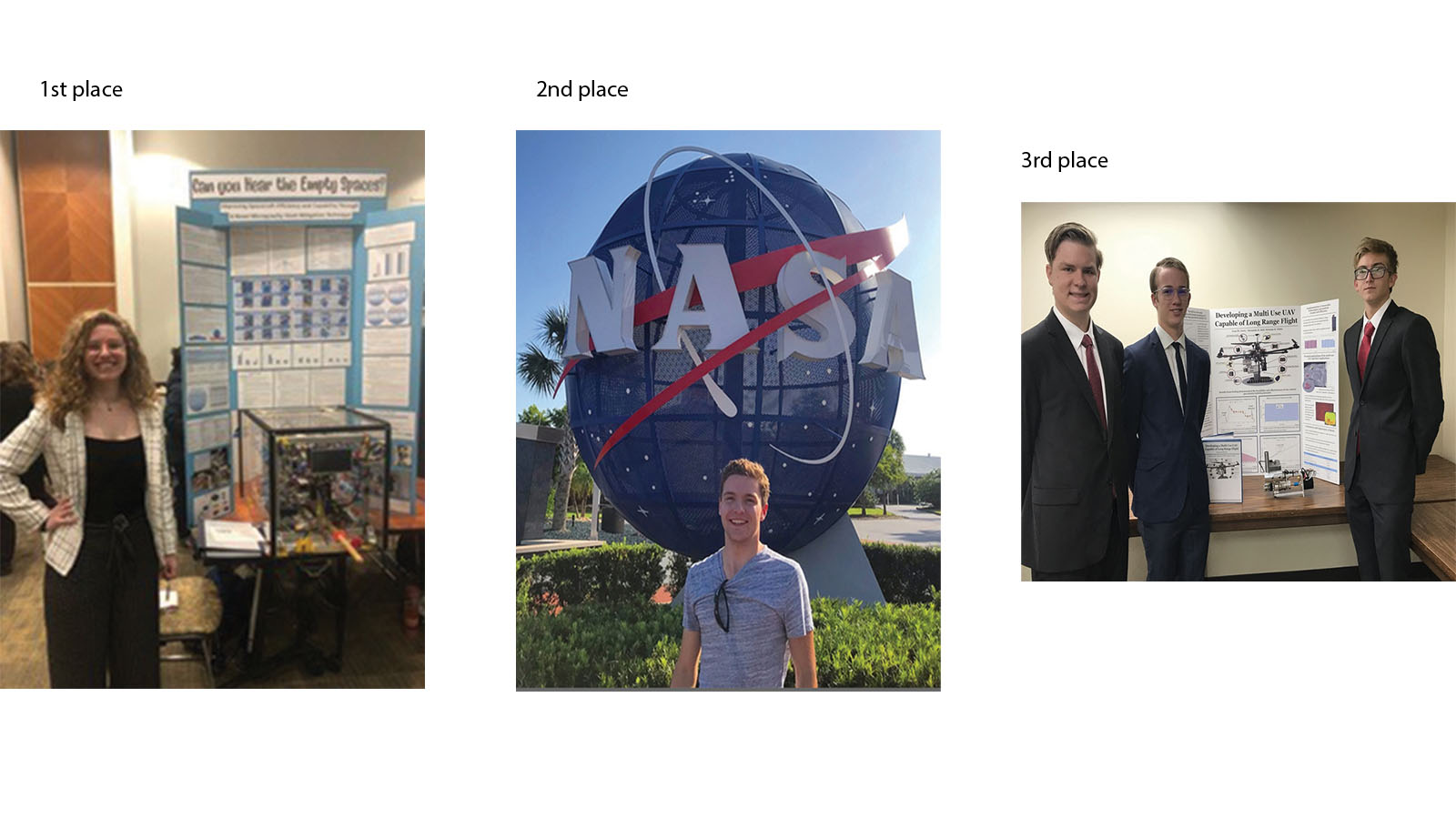
AIAA “Look Up!” Award: Intel ISEF Winners
The AIAA “Look Up!” Award, presented at the 2020 Regeneron International Science and Engineering Fair (Intel ISEF), held virtually 10–15 May, celebrates exceptional high school-level research to encourage further study in aerospace. Winners of the AIAA “Look Up!” Award receive a cash award and AIAA student membership with access to all student programs and upcoming partnership competitions and challenges. We congratulate the 2020 winners and encourage students to Look Up! and see their future in aerospace.
First Place ($1000): Eleanor Sigrest, grade 11, Governor’s School at Innovation Park, Manassas VA, “Improving Spacecraft Efficiency and Capability Through a Novel Microgravity Slosh Mitigation Technique”
Second Place ($500): Ryan Westcott, Oregon Episcopal School, Portland OR, grade 12, “Development of a Fully Reusable and Autonomously Landing Suborbital Rocket: Year Two”
Third Place ($250): Alexander Bell, Nicholas White, and Evan Curry, Grade 11, Kealakehe High School, Kailua Kona, HI, “Developing a Multi-Use UAV Capable of Long-Range Flight”

AIAA Awards Scholarship at 2020 Conrad Challenge Innovation Summit
The Conrad Challenge is an annual, multi-phase innovation and entrepreneurship competition that encourages young adults to participate in designing the future. Each year, teams of 2–5 students, ages 13–18, from around the world create products and/or services to address some of the most pressing global and local challenges. They become entrepreneurial problem-solvers, addressing challenging social, scientific, and societal issues through utilizing their creativity and critical-thinking skills. This year the 2020 Virtual Innovation Summit took place 27–29 May, and featured 37 student teams from around the world who competed for the top honor: the Pete Conrad Scholar award.
Team EcoAero from Naperville North, Naperviille, IL, won the Pete Conrad Scholar award for their presentation of the Airlyft, a versatile drone that conforms to the weight of its payload using retractable wings and a tiltrotor feature. The CEO of Team EcoAero, Arjun Shah, was awarded the $2,500 AIAA Scholarship Award.

Northern Ohio Section Livestreams Distinguished Lecture
By Joe Connolly, NOS Vice Chair
The AIAA Northern Ohio Section (NOS) held another installment of the Distinguished Lecture series via livestream on 23 April 2020. Dr. Robert Winn, who currently serves as the Principal Emeritus at Engineering Systems, Inc. (ESI), gave the lecture entitled “Anatomy of In-Flight Break Up.” Dr. Winn has been with ESI since 1994, and has reconstructed hundreds of aircraft accidents. The lecture covered the fundamentals of in-flight breakups and the three root causes: fatigue of a key structural element, flutter, and overload. The discussion included analysis of aircraft wreckage, fundamental airplane fluid dynamics, trajectory analyses, and airplane performance. The presentation was supported with videos, demonstrations, and high-definition animations of a general aviation accident.
Following the lecture, the audience involved Dr. Winn in an enthusiastic Q&A session, which lasted over 30 minutes. Despite the virtual format, participation went smoothly with attendees providing a wide range of questions and engaging in lively follow-up discussion.
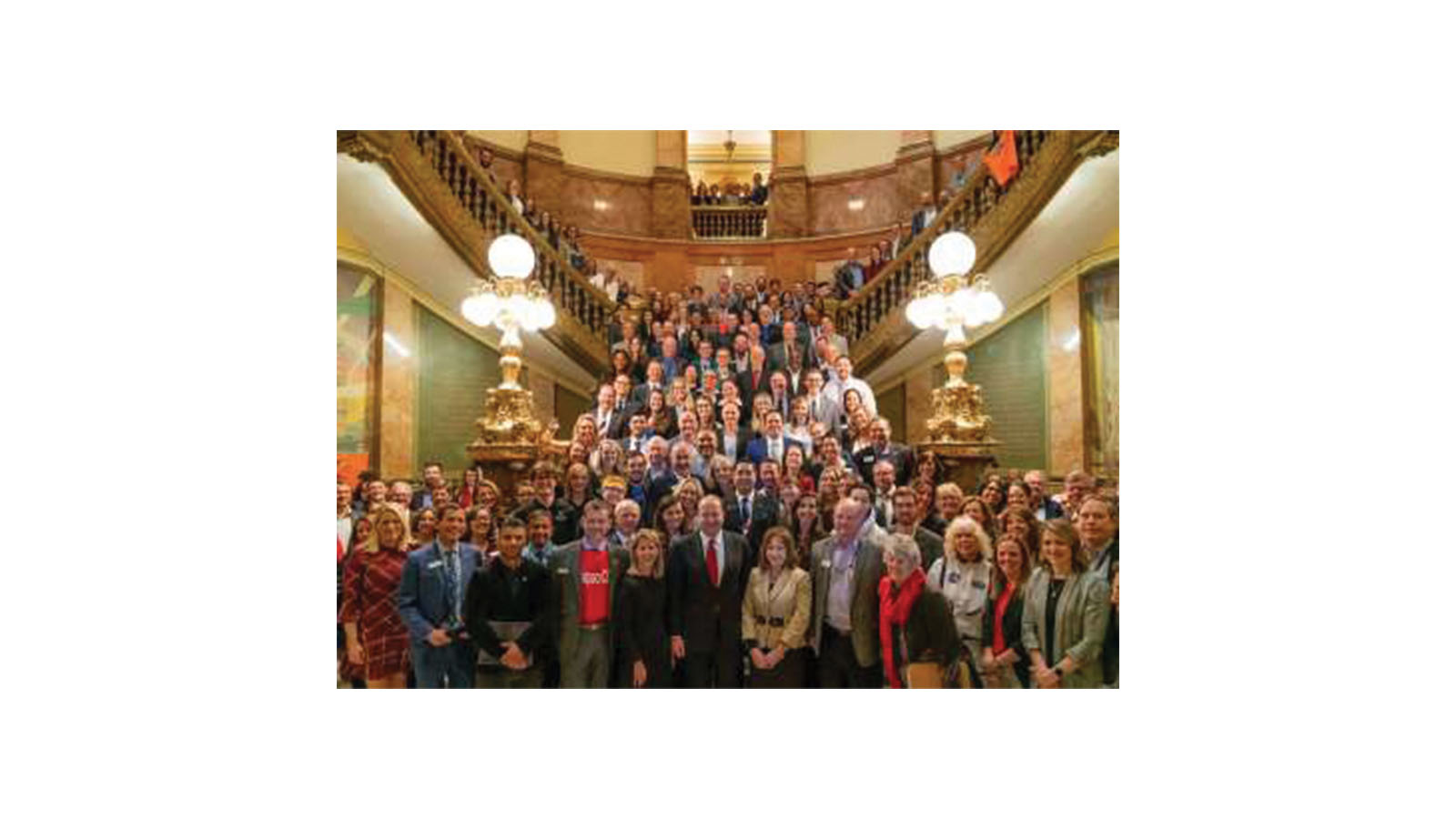
Colorado Aerospace Day at the Capitol
By Christine Pumford, Ball Aerospace
This year’s Colorado Aerospace Day at the Capitol took place 10 March 2020. This is an exciting event in which members of Colorado’s booming aerospace industry fill the Capitol to network and discuss with Colorado legislators the state of the industry and how they can support aerospace within the state. The Rocky Mountain Section represented AIAA at this event and the members in attendance were able to talk to numerous industry members, legislators, staffers, and students about AIAA.
Colorado legislators are excited about aerospace and engaged in learning more about it, especially since Colorado ranks as the number one state in the nation for per capita private aerospace employment.
The day began a welcome from the President of the Colorado Senate, Leroy Garcia. He welcomed the members of industry and expressed his pride in the Colorado Aerospace workforce. After Garcia’s welcome, attendees visited the House and Senate and witnessed the Senate vote in that session to make 10 March Colorado Aerospace Day. Later, Governor Jared Polis addressed the attendees and spoke about the growing aerospace industrial base in the state. The day concluded with an aerospace panel and reception at the Governor’s mansion.
Throughout the day and these events, attendees were able to visit the AIAA booth and discuss what we do and the current AIAA policy initiatives. Attendees were excited to hear about the different ways in which AIAA connects the aerospace community and what we are doing to engage STEM students.
IDA Researchers Receive Award for Best External Publication
Joel Williamsen (AIAA Associate Fellow), Daniel Pechkis (AIAA eMember), Asha Balakrishnan (AIAA member), and Stephen Ouellette are the recipients of the Institute for Defense Analyses (IDA) 2020 Larry D. Welch Award for Best External Publication, which honors external publications that exemplify analytic excellence and relevance. “Characterizing the Orbital Debris Environment Using Satellite Perturbation Anomaly Data” was published in the Conference Proceedings of the International Orbital Debris Conference, December 2019.
The IDA authors developed a novel concept to identify space debris. NASA has identified untracked orbital debris as one of the most serious threats to satellites in low Earth orbit. The concept involves translating changes in GPS position and temporary breaks in communications links to the corresponding mass of small impacting orbital debris. This approach can potentially provide a better understanding of the low-Earth-orbit debris environment that affects satellite design.
AIAA Fellow Becker Died in April
John V. Becker, 106, a retired NASA research engineer, died on 26 April 2020.
Becker graduated from New York University in 1935 with a degree in mechanical engineering and earned a master’s degree in aeronautical science in 1936. He joined the National Advisory Committee for Aeronautics (NACA), where he became a specialist in the aerodynamic and heating problems of high-speed flight at Langley Memorial Aeronautical Laboratory. From 1947 until his retirement, he held the position of chief of the NACA division devoted to hypersonic research. By 1949 his team had developed the first successful hypersonic wind tunnel. They became widely recognized in the mid-1950s for their conception and supporting hypersonic research for the X-15, a manned aerospace airplane designed to fly at six times the speed of sound. The NACA/Air Force X-15 research airplane exceeded all of its performance and research goals, producing technology for the first manned space projects.
Retiring from NASA in 1975, Becker remained active as an aerospace consultant. He authored The High-Speed Frontier, dealing with the history of several NACA high-speed aerodynamics research programs. Becker, an AIAA Fellow, joined AIAA’s predecessor organization in 1936, and was awarded the Sylvanus A. Reed Award of the Institute of the Aeronautical Sciences in 1960. He was the recipient of several other national honors and awards and in 2015 he was inducted into the Langley Research Center NACA and NASA Hall of Honor.
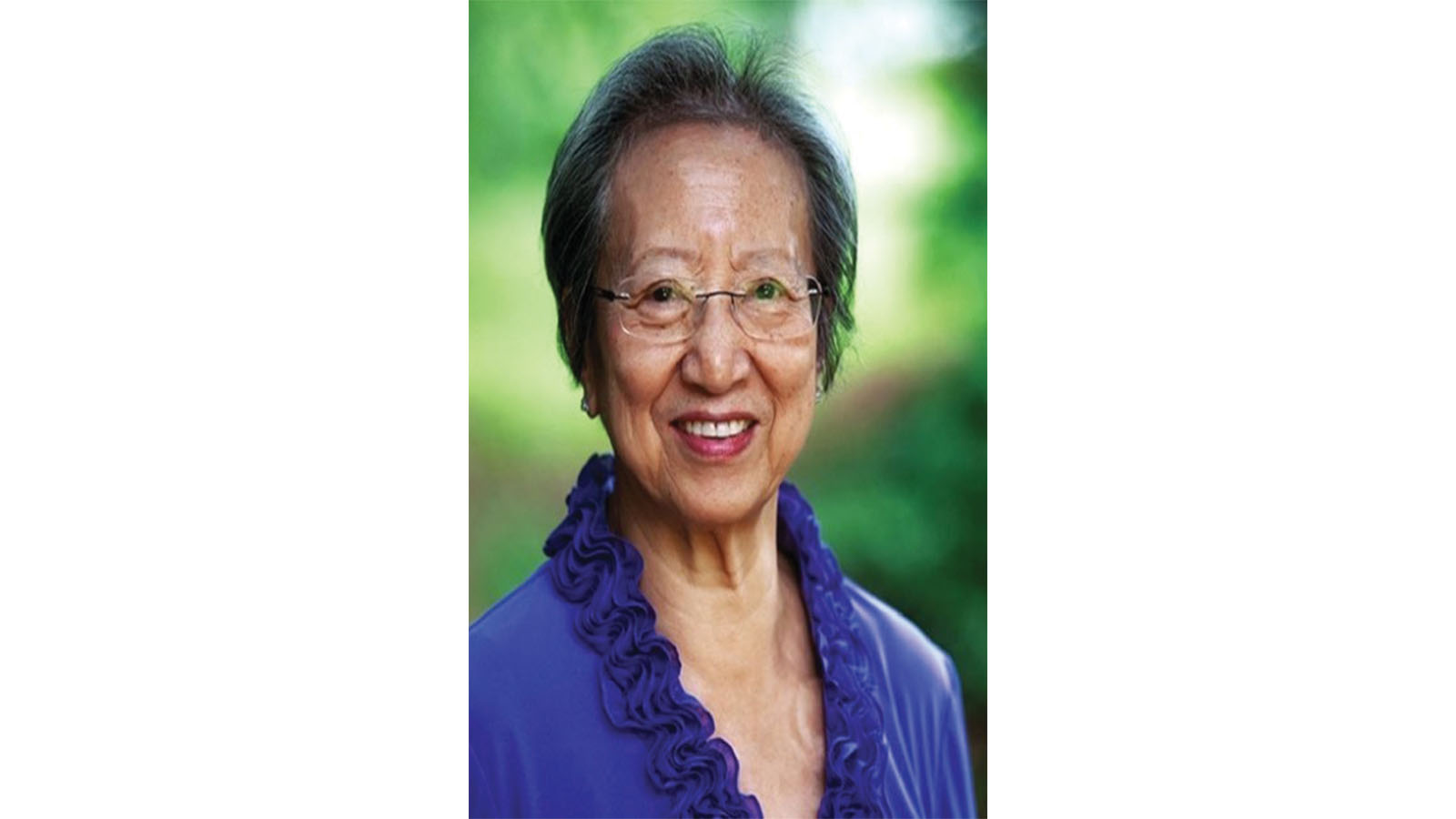
AIAA Associate Fellow Wu Died in May
Dr. Ying Chu Lin “Susan” Wu, a pioneer for women in aerospace and energy research, died on 19 May 2020. She was 87 years old.
Dr. Wu graduated with a degree in mechanical engineering from the National Taiwan University in 1951. She won the Amelia Earhart Fellowship from Zonta International to attend Ohio State University in 1957, and she moved to California Institute of Technology (Caltech) in 1959. She became the first woman to get a Ph.D. in aeronautics at Caltech in 1963.
Her career abruptly switched to energy conversion research in MHD when after graduating she needed to find health insurance coverage to repair a heart defect threatening her life. After her husband received his Ph.D., they took faculty positions in 1965 at the only school to offer a married couple jobs, the University of Tennessee Space Institute in Tullahoma.
Dr. Wu became an award-winning pioneer in MHD, eventually leading the program in coal-fired MHD at the University of Tennessee Space Institute. She often testified before Congress to explain U.S. progress in MHD as well as collaborative efforts with the U.S.S.R and other countries, and published over 100 papers. In 1988, Dr. Wu started her own company, Engineering, Research, and Consulting, Incorporated (ERC), in Tullahoma, and later moved the company to Huntsville, where she retired as CEO in 2000.
Having joined AIAA in 1958, Dr. Wu was a long-time AIAA Greater Huntsville Section member and an AIAA Associate Fellow. Throughout her career, Dr. Wu was awarded many prestigious awards, including Outstanding Educators in America, Farady Medal for MHD Power Generation, AIAA Plasmadynamics and Laser Award, Society of Women Engineers Achievement Award, and Caltech’s alumni of the year 2013. Dr. Wu was also a fellow of ASME and life member of SWE.
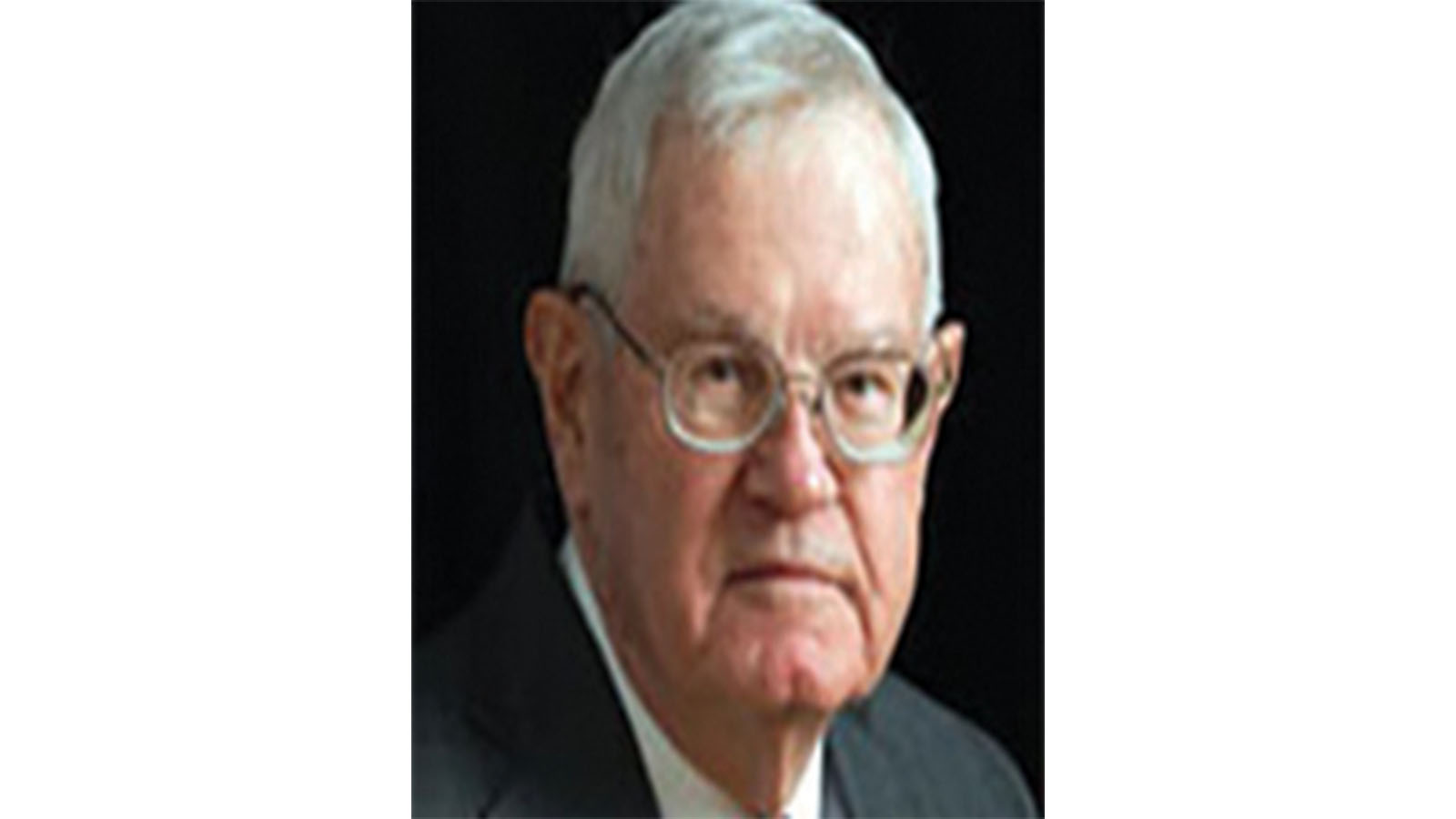
AIAA Honorary Fellow Aldrich Died in May
Arnold D. Aldrich, 83, died on 28 May 2020.
Mr. Aldrich began his career after earning a B.S. in Electrical Engineering from Northeastern University in 1959. He enjoyed a 35-year career at NASA spanning all manned-mission programs including Mercury, Gemini, Apollo, and the Space Shuttle. He served as Skylab deputy program manager; Apollo Spacecraft Program Office Deputy Manager during the Apollo Soyuz Test Project; and as Orbiter Project Manager during development of Space Shuttles Discovery and Atlantis. Following the Challenger accident, he was appointed director of the Space Shuttle Program where he led recovery and return-to-flight efforts. He then served as NASA Associate Administrator for Aeronautics and Space Technology and, later, for Space Systems Development. Mr. Aldrich also led initiatives with Russia leading to the incorporation of the Russian Soyuz spacecraft as the on-orbit emergency rescue vehicle for the International Space Station. Arnold joined Lockheed Missiles and Space Company in 1994 as Vice President and retired in 2007.
Aldrich joined AIAA in 1976 and became an Honorary Fellow in 2012. He was recognized with AIAA’s Distinguished Service Award in 2010 “for over three decades of continuous, dedicated service to the Institute as a strong supporter and tireless participant, and for significant contributions and leadership to the aerospace profession. He also received AIAA’s International Cooperation Award in 1996 “for significant and continuing contributions to the cooperative relationship between Russia and the United States, both during the Apollo-Soyuz Test Project and the International Space Station programs.”
Other honors included the Presidential Rank of Distinguished Executive, Presidential Rank of Meritorious Executive (twice), NASA Distinguished Service Medal (three times), Northeastern University Outstanding Alumni Award, Arthur S. Fleming Award, NASA Outstanding Leadership Medal, VFW Aviation and Space Award, AIAA Space Systems Award, and NASA Exceptional Service Award. Aldrich was also a member of the International Academy of Astronautics, and a member of the National Academy Aeronautics and Space Engineering Board.
Following retirement Aldrich continued to support space initiatives including mentoring young aerospace program managers and helping select award winners for annual NASA Rotary Awards.
Stay Up to Date
Submit your email address to receive the latest industry and Aerospace America news.




